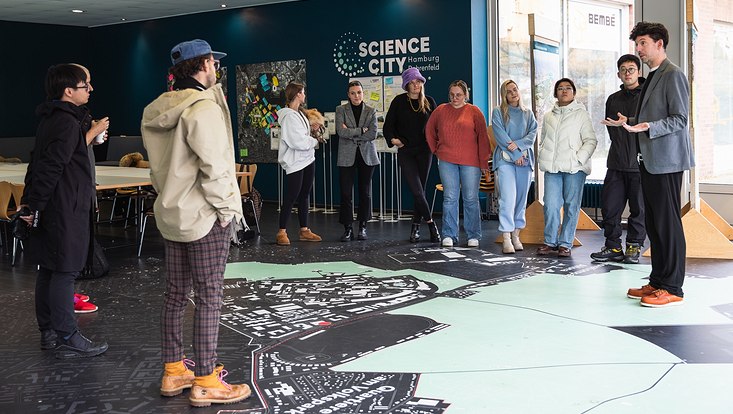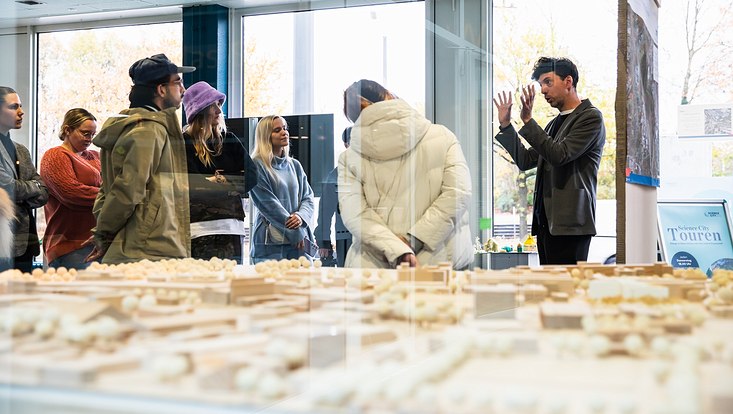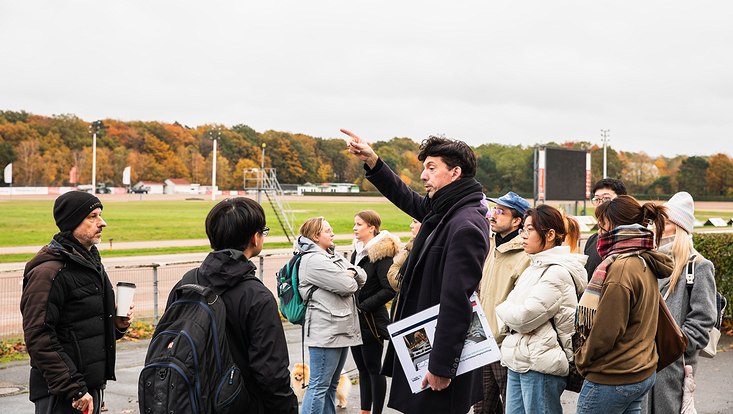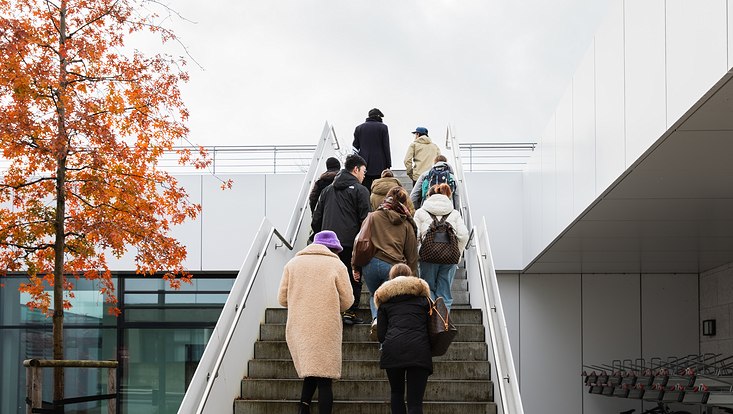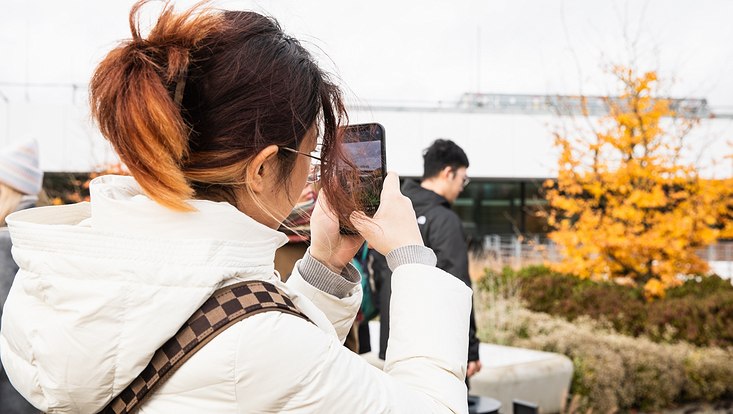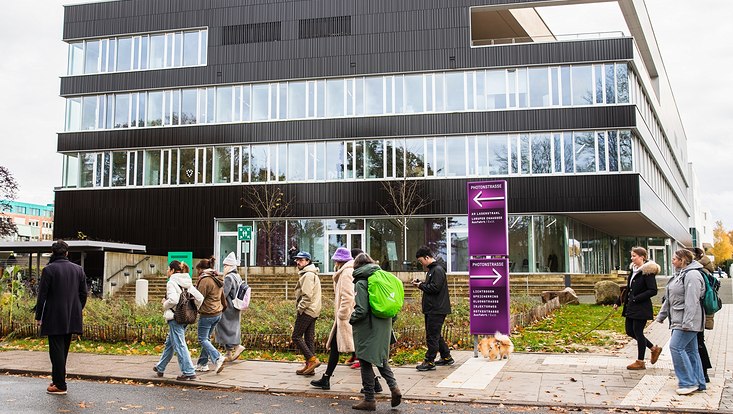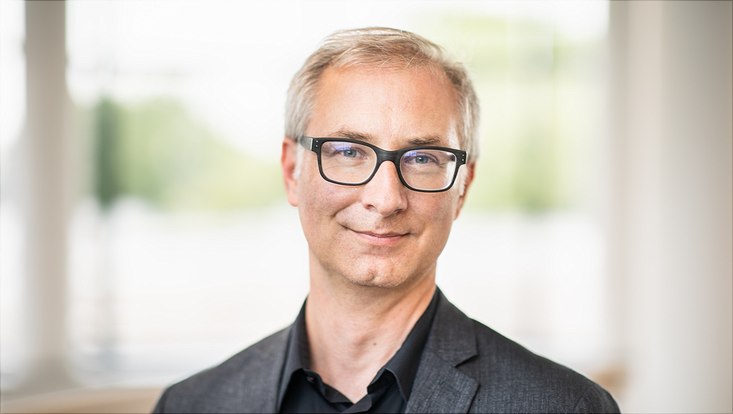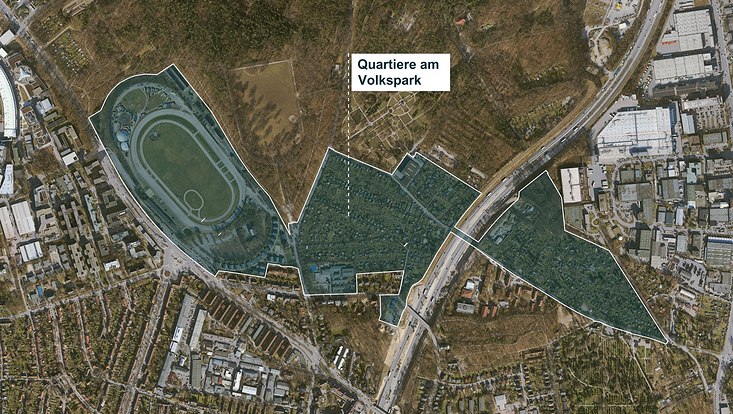Exploring Hamburgs new science area on footGreen-Field Site, Office and Residential Buildings, Modern Infrastructure—the Science City Has a Lot to Offer
8 April 2024, by Claudia Sewig
The Science City infocenter advertises free tours of Hamburg’s new science area with the slogan: “Talk as you walk: Learn more about the city and science.” Participants in a course at Brand University of Applied Sciences in Hamburg accepted the offer. What found these students from across the world particularly noteworthy? Impressions from the tour.
Prof. Michael Jonas, head of the digital design program at Brand University of Applied Sciences in Hamburg, is delighted and welcomes this opportunity. Once a year, he takes his respective students in the brand strategy master’s program from their rooms above Hamburg’s Fish Market to Bahrenfeld to discuss Hamburg’s growth against the backdrop of a vastly different environment that will be significantly transformed over the next 2 decades. Another central question is: “Why does innovation happen in some places and not in others?”
Only 11 of his 28 students are showing up on this gray, cold, and wet morning—not for a lack of interest but due to a scheduling conflict. The participants are as international as their degree program with a focus on marketing in a rapidly changing business and brand landscape: Coming from China, Argentina, the USA, France, Poland, and India, they bring different ideas about academia and the associated urban development.
Science showcase
From Thorsten Gödtel’s perspective these are ideal conditions. The university-trained urban planner is a freelance tour guide for the Science City GmbH. Today’s tour begins with an interactive map of the Science City on the infocenter floor. Gödtel thus provides the students gathered around him with a first impression of the size and location of the site and makes them aware of its many facets. “Some parts will be planned and built from scratch, such as the Quartiere am Volkspark which will cover the racetrack area and today’s urban allotment gardens. In other parts existing buildings will be converted, modernized, and complemented by new buildings. Just like the Science Center infocenter building,” says the urban planner.
The students are astonished. The former office building on Albert-Einstein-Ring 8–10 hardly looks like a world-renowned scientific hub. Gödtel explains that the building had been renovated in the past months so Universität Hamburg could move the physics internship for beginners, part of the House of Computing and Datascience (HCDS), and the Center for Bioinformatics (ZBH) here, for example. This may grow into a showcase of science on Luruper Chaussee right next to the infocenter. So far, however, there is nothing much to show yet.
3,800 new apartments
Switching to the other side of the street for the first stop of the tour, the Bahrenfeld racetrack area, the students can see for themselves. “3,800 new apartments, a new S-Bahn line, kindergarten daycare and schools:” Sweeping his arm, Thorsten Gödtel seems to be using the wide open oval as a canvas for painting the future, as he gazes across the greenfield lot. Six international teams collaborated on the planning. Three designs, selected in February 2024, are competing in the race—the final decision is expected this summer. The Science City will not only be a place for research but also a live-work-play neighborhood with “shopping opportunities, coffee places, and bars,” says Gödtel.
Back across the Luruper Chaussee, the group takes the eastern entrance to the Science City’s actual research area. This side entrance is commonly called “Uni entrance,” as most University buildings are located on this side of the lot, for instance, the physics school lab Light and Schools or the Institute for Laser Physics. Haonan Liang is thrilled with the school lab idea. The student from China asks: “We have a science museum in Hong Kong. Will there be one here as well?” Thorsten Gödtel reports on the status of the Desyum, that is to open in Summer 2025 and will also offer a multimedia exhibition. “However, it will likely seem small compared with the one in Hong Kong.”
Rooftop gardens
The Desyum is the future visitor center of the Deutsches Elektronen-Synchrotron (DESY), one of the major players in the Science City Hamburg-Bahrenfeld alongside the European Molecular Biology Laboratory (EMBL) or European XFEL. At the Max Planck Institute for the Structure and Dynamics of Matter, Thorsten Gödtel and his group climb to the rooftop garden. The students pose for a photo on the lovingly designed green platform. In fact, the Danish design that won the competition for the new HAFUN lab building (Hamburg Fundamental Interactions Laboratory) for researchers of Universität Hamburg’s Cluster of Excellence Quantum Universe also includes a green roof. This is to add more green to the lot—home to a number of old trees and greenery worth preserving.
On their way to today’s last stop of the shortened tour, the group passes a few old, low brick buildings with cars aplenty parking in front of them. Fermin Uriz from Argentina asks: “What will the future of mobility look like here?” “There will be a mix of cycling, walking, and public transport. The Science City will offer everything at a short distance; fostering a private car culture is not an aim,” says Gödtel. This is likely to correspond with the mobility and commuting behavior of the over 5,000 students expected to study here. Thorsten Gödtel points to the fence on the property line and some office buildings: The future home of the Learning Center for Universität Hamburg students. This is why, among other things, we must consider which parts of the fence can be removed.” Gödtel believes that in this day and age science also means opening up to the public. “The Science City is doing exactly this.”
Science City Hamburg-Bahrenfeld
The Science City Hamburg-Bahrenfeld will span 125 hectares in Hamburg’s western suburbs, right next to Altona’s Volkspark, a public park. Besides the University, various renowned institutions, such as DESY; the European X-Ray Free-Electron Laser GmbH; the Max Planck Institute for the Structure and Dynamics of Matter; and the European Molecular Biology Laboratory already make for a research campus. Moreover, 2 out 4 Universität Hamburg clusters of excellence are located here: CUI: Advanced Imaging of Matter and Quantum Universe.
And the area continues to grow. By 2040, lively residential areas, sports and leisure facilities, and shopping opportunities will supplement research, training, and businesses. The A7 expressway will be covered and Hamburg’s racing track will be moved, facilitating the construction of 3,800 new apartments and 2 schools.
Science City Hamburg Bahrenfeld GmbH is responsible for the development of the premises. It has a center that offers, in addition to information for visitors, guided tours around the area. Every Thursday at 6 pm, there are tours for interested members of the public. You do not have to sign up! The free tours start from Infocenter Science City, Albert-Einstein-Ring 8-10. Find more information on the homepage.


